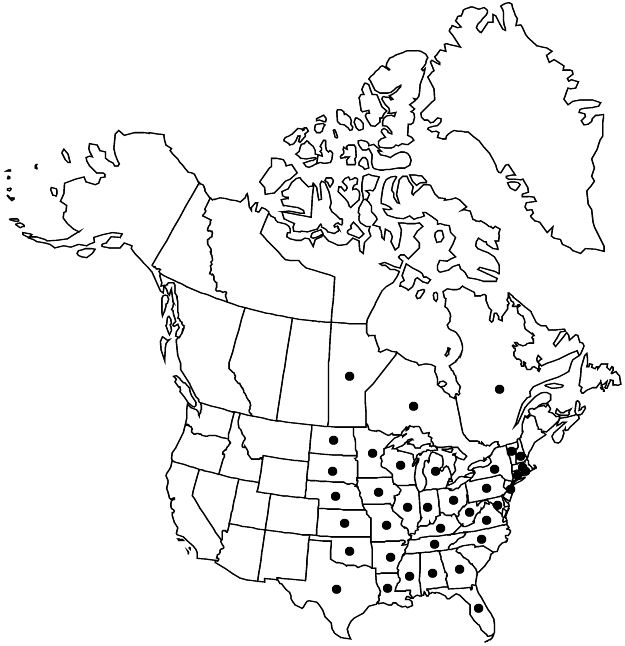Linum sulcatum
W. J. Med. Phys. Sci., 10. 1836.
Herbs, annual, 25–85 cm, glabrous. Stems erect to ascending, unbranched proximally, few to many branches above middle, conspicuously sulcate. Leaves: proximal 0–13 pairs opposite (often fallen at anthesis), distal alternate, appressed-ascending; stipular glands usually present, very rarely absent; blade linear to narrowly lanceolate, 7–30 × 1–3 mm, margins entire, distal leaves not ciliate, apex acute to subulate; midrib prominent, marginal nerves less conspicuous. Inflorescences open panicles; bracts glandular-toothed, not ciliate. Pedicels 1.3–4.7 mm. Flowers: sepals persistent, lanceolate, (3.1–)3.6–5(–7.3) mm, inner sepals more delicate than outer, shorter, margins not scarious, all very conspicuously glandular-toothed, apex acuminate, central and marginal veins conspicuous; petals pale yellow, obovate, 5–10 mm; stamens 3.3–5.7 mm; anthers 0.3–0.7 mm; staminodia absent; styles connate 0.2–1.8 mm at base, 2–4.5 mm; stigmas capitate. Capsules globose, 2.5–3.3 × 2.1–3 mm, apex rounded to acute, dehiscing freely into 10, sharp-pointed, 1-seeded segments; segments persistent on plant, false septa incomplete, margins prominently ciliate. Seeds 1.6–2.1 × 0.8–1.1 mm. 2n = 30.
Phenology: Flowering May–Sep.
Habitat: Sandy, gravelly fields, calcareous ledges and barrens, diabase barrens, cedar glades, prairies, alvars, sometimes in open woods, interdunal flats.
Elevation: 0–800 m.
Distribution

Man., Ont., Que., Ala., Ark., Conn., Fla., Ga., Ill., Ind., Iowa, Kans., Ky., La., Md., Mass., Mich., Minn., Miss., Mo., Nebr., N.H., N.J., N.Y., N.C., N.Dak., Ohio, Okla., Pa., R.I., S.Dak., Tenn., Tex., Vt., Va., W.Va., Wis.
Discussion
Linum sulcatum and L. harperi are the only species of the genus in eastern North America with styles united from the base to the middle and all five sepals persistent and with glandular-toothed margins. In L. sulcatum, all parts of the flower are yellow and the corolla is funnelform. Dried plants of L. sulcatum are pale green.
Selected References
None.